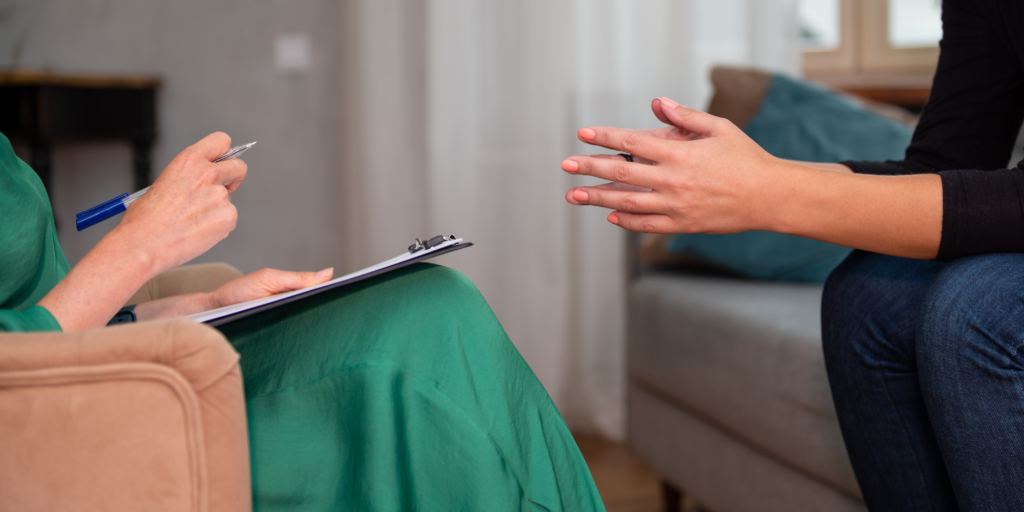What is Exposure Therapy?

What is Exposure Therapy and what can it be used to treat?
Exposure Therapy is a type of Cognitive Behavioral Therapy (CBT) used in talk therapy to treat people struggling with fear or anxiety.
Exposure therapy can be used to treat the following disorders:
-
- Phobias
- Obsessive Compulsive Disorder (OCD)
- Post Traumatic Stress Disorder (PTSD)
- Panic Disorder
- Social Anxiety Disorder
- Generalized Anxiety Disorder
Common to these disorders is the tendency to avoid feared objects or situations. Avoidance helps to manage discomfort in the short term, but in the long term, it tends to increase fear and anxiety associated with the object or situation.
Confronting feared objects or situations within the context of a good alliance with a trusted therapist allows the opportunity to form new, more neutral or positive associations with the feared object or situation. This rationale is the basis behind Exposure Therapy.
What is an exposure hierarchy?
Often in the planning phase of Exposure Therapy, the therapist will work with their client to develop a “hierarchy of fear” to aid in guiding the treatment. This works by breaking down the feared situations more granularly by rating the fear or anxiety associated with each situation, usually on a scale of 0-100.
For example, someone with Social Anxiety Disorder might rate calling a business to place a carry-out order as a 15/100 in terms of anxiety experienced, and they might rate giving a speech at 95/100. The feared situations can then be organized by these ratings, and the therapist and client can start by working on the least feared situations first to give the client more confidence to continue working their way up the hierarchy. This technique of starting with mildly or moderately feared situations and progressing to more difficult ones is called “graded exposure”.
What are the different types of Exposure Therapy?
There are four “types” of exposure therapy which vary in terms of the method by which the person is being “exposed” to their feared object or situation.
- In vivo exposure: “In vivo” is basically the jargony way of saying “in real life.” This type of exposure involves real-time exposure to the feared object or situation. For example, someone with a phobia of spiders would practice exposure to spiders in real life.
- Imaginal exposure: This type of exposure involves vividly imagining the feared object or situation. For example, a person with Post Traumatic Stress Disorder might recall their trauma in vivid detail in order to reduce the fear associated with these memories.
- Virtual reality exposure: Not all feared objects or situations can be easily replicated, and this is where virtual reality exposure can be a helpful tool. For example, a flight simulator can be used to help someone overcome their fear of flying.
- Interoceptive exposure: Interoception is “the sense of the internal state of the body”. In some disorders, like Panic Disorder and Generalized Anxiety Disorder, bodily sensations associated with fear and anxiety, like lightheadedness or a racing heart, are themselves feared and avoided. Thus, deliberately bringing about the feared bodily sensation helps the person to learn that these sensations are harmless. For example, the person might run up and down a flight of stairs to increase their heart rate, or spin in an office chair to induce lightheadedness.
Exposure and Response Prevention (ERP) for OCD
ERP is a specific type of Exposure Therapy used to treat Obsessive Compulsive Disorder (OCD). OCD is characterized by the presence of either Obsessions or Compulsions. Obsessions are essentially intrusive thoughts or images, and Compulsions are behaviors that the person feels they must complete. Often times, obsessions and compulsions are linked, in that the person feels they must complete a behavior (compulsion) in order to reduce their anxiety associated with the image or thought (obsession). For example, someone with obsessions about germs might compulsively wash their hands to reduce the anxiety associated with thoughts of getting sick from germs.
The idea behind ERP is that if the person is exposed to an object or situation that tends to trigger an obsession, and they are then prevented from completing the compulsion (this is the “response prevention” part of ERP), the association between the obsession and the compulsion will be extinguished. For example, the person with obsessions about germs might be guided to touch a frequently touched surface (like a doorknob) and prevented from washing their hands. This will likely cause the person a great deal of anxiety at first, but over time, the anxiety will naturally decrease. This natural decrease in anxiety over time is called “habituation”.
Finding an Exposure Therapy or ERP Therapist
Great Lakes Psychology Group is networked with hundreds of licensed therapists. We can help connect you with an online or in-person therapist specializing in Exposure Therapy and/or Exposure and Response Prevention (ERP).
Ready to prioritize your mental health?
Great Lakes Psychology Group is here to help. With an extensive network of caring therapists available to meet online or in-person, we make it easy to find the right fit for your unique needs.




